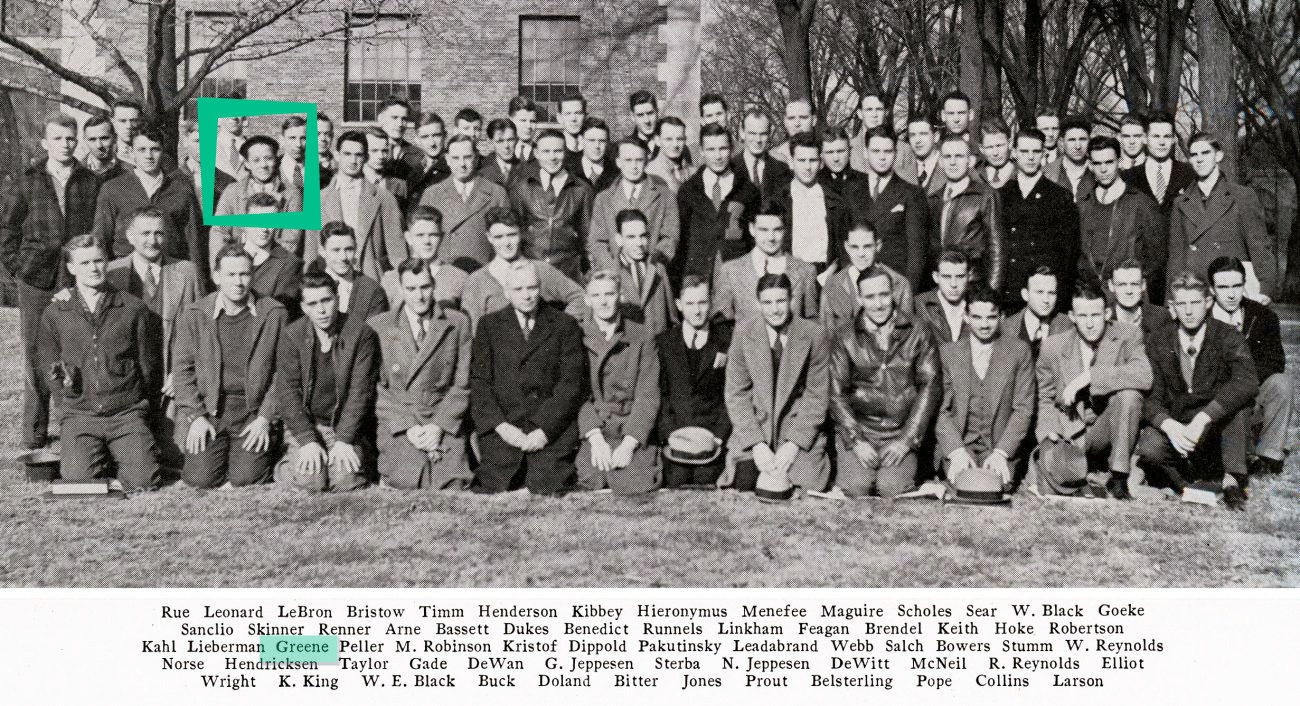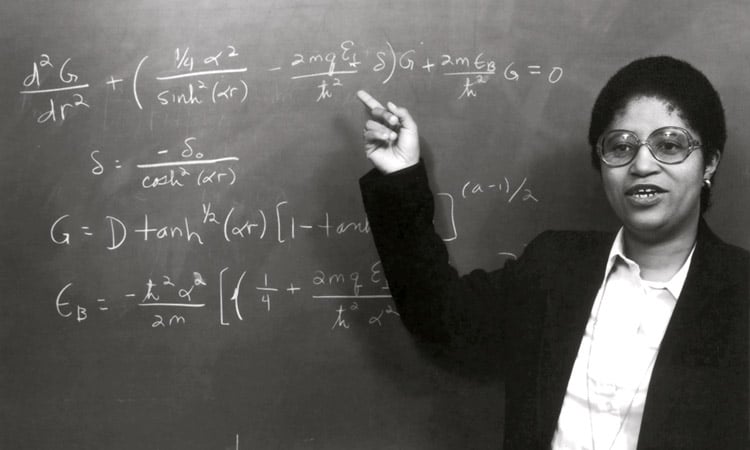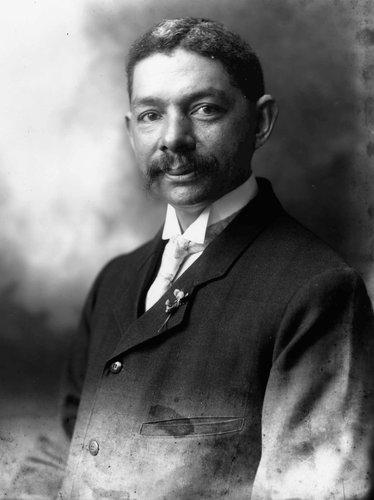Spotlighting Innovators in Science, Technology, and Architecture!
In this blog, we are highlighting innovators in science, technology, and architecture!
At Intellis, we are committed to cultivating a diverse, inclusive, and collaborative workplace. As a result, we are empowered to develop the most creative and cutting-edge solutions for our clients and partners through the richness of diversity.
In this way, we are honoring Black history this month by highlighting the legacies and achievements of American innovators in science, technology, and architecture.
BEVERLY LORAINE GREENE
The first African-American Woman architect was licensed in the United States on December 28, 1942. She was the first African-American woman to earn her degree in architectural engineering from the University of Illinois.
 Image: Yearbook photograph of Beverly Greene with other American Society of Civil Engineers (ASCE) student chapter members on the University of Illinois Champaign-Urbana campus, 1936. Greene is standing in the second row, third from the left. (Photo: Pioneering Women).
Image: Yearbook photograph of Beverly Greene with other American Society of Civil Engineers (ASCE) student chapter members on the University of Illinois Champaign-Urbana campus, 1936. Greene is standing in the second row, third from the left. (Photo: Pioneering Women).
Beverly Loraine Greene (October 4, 1915, to August 26, 1957) is considered the first African-American woman architect in the United States. Born and raised in Chicago, Illinois, she earned a Bachelor of Science degree in architectural engineering from the University of Illinois in 1936. The following year, she earned a Master of Science in city planning and housing from the same university. At twenty-seven, Greene was registered in Illinois as an architect.
After completing the second degree, Greene worked for the Chicago Housing Authority, one of the first African Americans in the agency. She moved to New York City in 1945 to work on the planned Stuyvesant Town private housing project built in lower Manhattan by the Metropolitan Life Insurance Company. Next, she accepted a scholarship at Columbia University, where she studied urban planning and received a master's in architecture from Columbia on June 5, 1945.
Greene went on to work for many notable architectural firms. Her employers during that period included the architectural firm headed by Isadore Rosefield, which specialized in healthcare and hospital design. In 1952, she also worked with Edward Durell Stone on the arts complex at Sarah Lawrence College and a theater at the University of Arkansas.
During her time with the architectural firm headed by Marcel Breuer, she worked at the United Nations Educational, Scientific and Cultural Organization (UNESCO) headquarters in Paris, France, completed in 1958. Her following projects included New York University (NYU) buildings constructed between 1956 and 1961. Sadly, Greene did not see many of the NYU buildings she helped design because she died in 1957 at age forty-one in New York City.
GUION BLUFORD, J.R.
First African American to enter space in 1983 as a member of the Orbiter Challenger crew on the mission STS-8.
“I felt an awesome responsibility, and I took the responsibility very seriously, of being a role model and opening another door to black Americans, but the important thing is not that I am black, but that I did a good job as a scientist and an astronaut. There will be black astronauts flying in later missions … and they, too, will be people who excel, not simply who are black . . . who can ably represent their people, their communities, their country.”

Bluford onboard NASA's Orbiter Challenger on the mission STS-8 in 1983 (Photo: WikiCommons).
Guion Stewart Bluford Jr. (November 22, 1942, to Present) was an aerospace engineer, fighter pilot, decorated Vietnam veteran, instructor pilot, and NASA Group 8 mission specialist on four Space Shuttle missions.
He earned a Bachelor of Science degree in aerospace engineering from Pennsylvania State University in 1964, a Master of Science degree in Aerospace Engineering from the U.S. Air Force Institute of Technology (AFIT) in 1974, a Doctor of Philosophy degree in Aerospace Engineering with a minor in Laser Physics, again from AFIT, in 1978, and a Master of Business Administration degree from the University of Houston–Clear Lake in 1987.
Bluford was inducted into the International Space Hall of Fame in 1997, the United States Astronaut Hall of Fame in 2010, and the National Aviation Hall of Fame in 2019.
SHIRLEY A. JACKSON
American theoretical physicist and inventor was the first African-American woman to earn a Ph.D. in theoretical solid-state physics from MIT.
“The world needs bright young people, as many as possible, from all backgrounds to address our greatest challenges: climate change; national and global security; the mitigation of the disease and human health; food, water, and energy security for a growing global population. All of these challenges require new science and new technology. To take them in hand, we must inspire our children today to learn that which will allow them to discover and innovate tomorrow."
 (Image via Success Academies)
(Image via Success Academies)
Shirley Ann Jackson (August 5, 1946, to the Present) is an American physicist and the 18th president of Rensselaer Polytechnic Institute. She is the first African-American woman to earn a doctorate at the Massachusetts Institute of Technology (MIT).
Previously, Jackson was a theoretical physicist at Bell Labs, Chairman of the U.S. Nuclear Regulatory Commission, and an academic physics professor at Rutgers University. Her research laid the foundation for others to build fiber optic cables, portable faxes, and solar cells.
President Obama named Jackson to the President's Intelligence Advisory Board co-chair in 2014. She also serves on the Secretary of State's International Security Advisory Board and Secretary of Energy Advisory Board.
ROBERT ROBINSON TAYLOR
An American architect and educator was the first African-American student at the Massachusetts Institute of Technology (MIT) and the first accredited African-American architect.
 Robert R. Taylor, ca. 1906. (Image: WikiCommons).
Robert R. Taylor, ca. 1906. (Image: WikiCommons).
Robert Robinson Taylor (June 8, 1868 – December 13, 1942) was an American architect and educator. Taylor was the first African-American student enrolled at MIT and the first accredited African-American architect when he graduated in 1892. He was an early and influential member of the Tuskegee Institute faculty.
As a native of Wilmington, North Carolina, Taylor remained in architectural practice in the American South for over forty years. He designed many of the early buildings of the Tuskegee Institute and several other Historically black colleges and universities. As second-in-command to Booker T. Washington, the Tuskegee Institute's founder, Taylor was instrumental in campus planning and inventing the school's industrial curriculum.
Robert Taylor served on the Mississippi Valley Flood Relief Commission, appointed by President Herbert Hoover, and was chairman of the Tuskegee chapter of the American Red Cross.
In 1935, after he retired to his native Wilmington, North Carolina, the governor of North Carolina appointed Taylor to the board of trustees of Fayetteville State University.
--
Intellis empowers facility leaders with solutions that make collecting data for facility condition assessments and capital planning much more manageable. Our best-in-class facility planning platform is your intelligent, confident decision-making tool. Our mobile enterprise systems apply to many fields and industries, from government and education to corporate real estate and construction.

